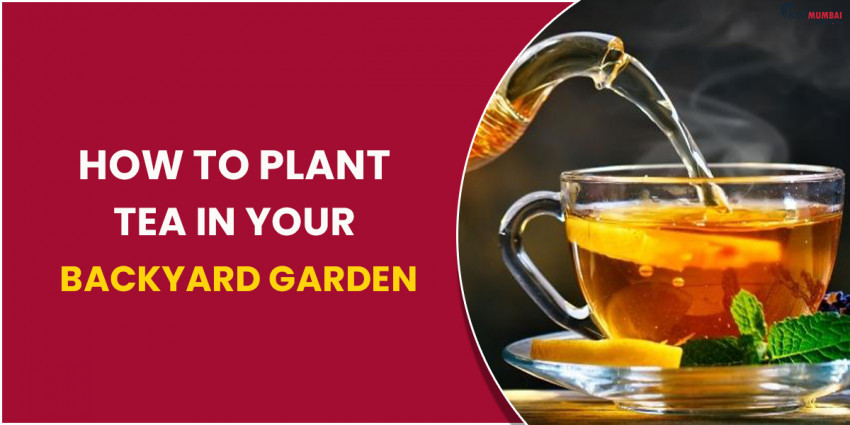
Many people—if not all—begin each day with a warm cup of tea. Everyone's morning routine needs to include it. The art of making tea begins with selecting the mug from the cabinet as you wait for the water to boil, followed by giving the tea time to steep. Tea lovers always like a cup of tea that is perfectly flavored.
However, there are so many alternatives that choosing the right dried tea from the abundance of choices might be overwhelming. Why not use those that are offered in the market to create your tea? To produce the ideal brew, you can grow the tea plants and other necessary herbs in your own garden.
Additionally, there is nothing quite as enjoyable as seeing a tea plant develop and enjoying a steaming cup of tea made from organically grown leaves from your backyard garden. Tea planting takes patience, but with the right information and little effort, you can become an expert. It is easy and enjoyable to grow tea at home. Everyone may obtain the knowledge and abilities required for home tea gardening because tea is the common beverage.
The most amazing aspect is that growing tea doesn't require a large area. It would be sufficient to have a planter on a balcony or a tiny area in your garden. Understanding the tea plant, its requirements for growth, and how to harvest the leaves will help you cultivate your own tea.
Various Techniques for Home Tea Cultivation
Utilizing Seeds
Since tea leaves must be at least three years old before being plucked, growing tea from seed requires a lot of time and labor. Before planting, tea seedlings must first grow and be nurtured. The process involves soaking and sprouting the seeds, frequently inside in a climate-controlled environment.
Utilizing Seedlings
Tea growers periodically move bare-root tea seedlings from one area to another when additional plants are needed. Typically, a nursery would sell sprouted tea seedlings for your garden.
Utilizing Cuttings
Tea bush cuttings are multiplied by replanting them in soil after being dipped in a hormone that encourages plant regret. Harvestable tea can be grown more quickly using this method than by sowing seeds.
Varieties of Tea Plants
The two most popular Camellia sinensis cultivars used in tea planting are Camellia sinensis var. sinensis and Camellia sinensis, assamica. These plants are used to create oolong, green, white, and black teas.
Small-leafed teas with a milder white or green tea flavor are resiliently produced by the Camellia sinensis var. sinensis plant. Teas made from Camellia sinensis var. assamica have larger leaves. Many times, assamica bushes are utilized to cultivate teas with stronger flavors, such black, oolong, or black tea (Assam tea).
Steps for Growing Tea at Home
Tea can be planted outdoors, inside, or in a greenhouse. Here are some crucial procedures to develop tea plants.
Get Tea Plants or Seeds
For planting tea, you can either purchase a plant that has already sprouted or take plants from an existing tea bush.
Prepare your Soil
Tea grows best in sandy, acidic soil with a pH of 5.5 to 6.5. You can boost the pH of your soil by adding pine needles or sulphur if it isn't acidic enough. Tea should have plenty of room, and your soil should be able to drain well.
Dry and Soak the Seeds
Before planting, soak tea seeds in a container for 24 to 48 hours. Take out any seeds that surface and float. Drain the healthy seeds, and then spread them out in the sun on a cloth. To keep them moist, sprinkle water every few hours. After one or two days, the grains' hulls should shatter, signifying that they are ready to be planted.
Source from: navimumbaihouses



